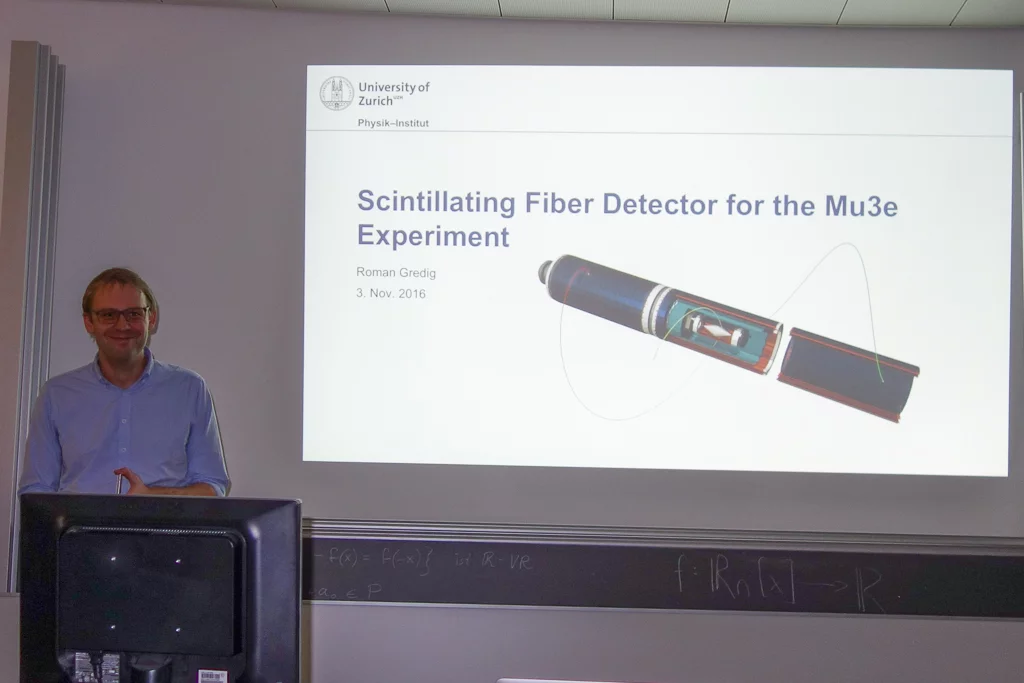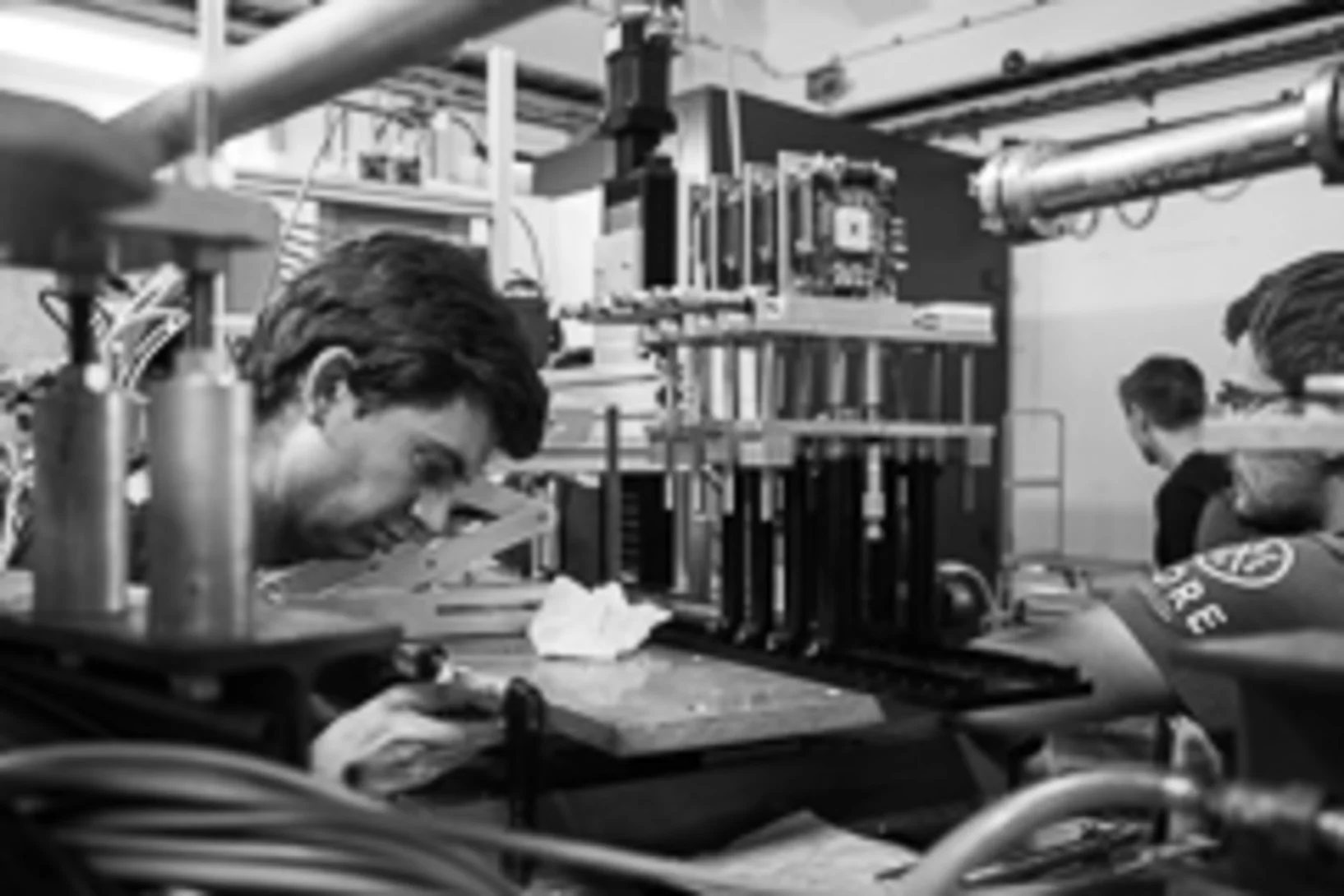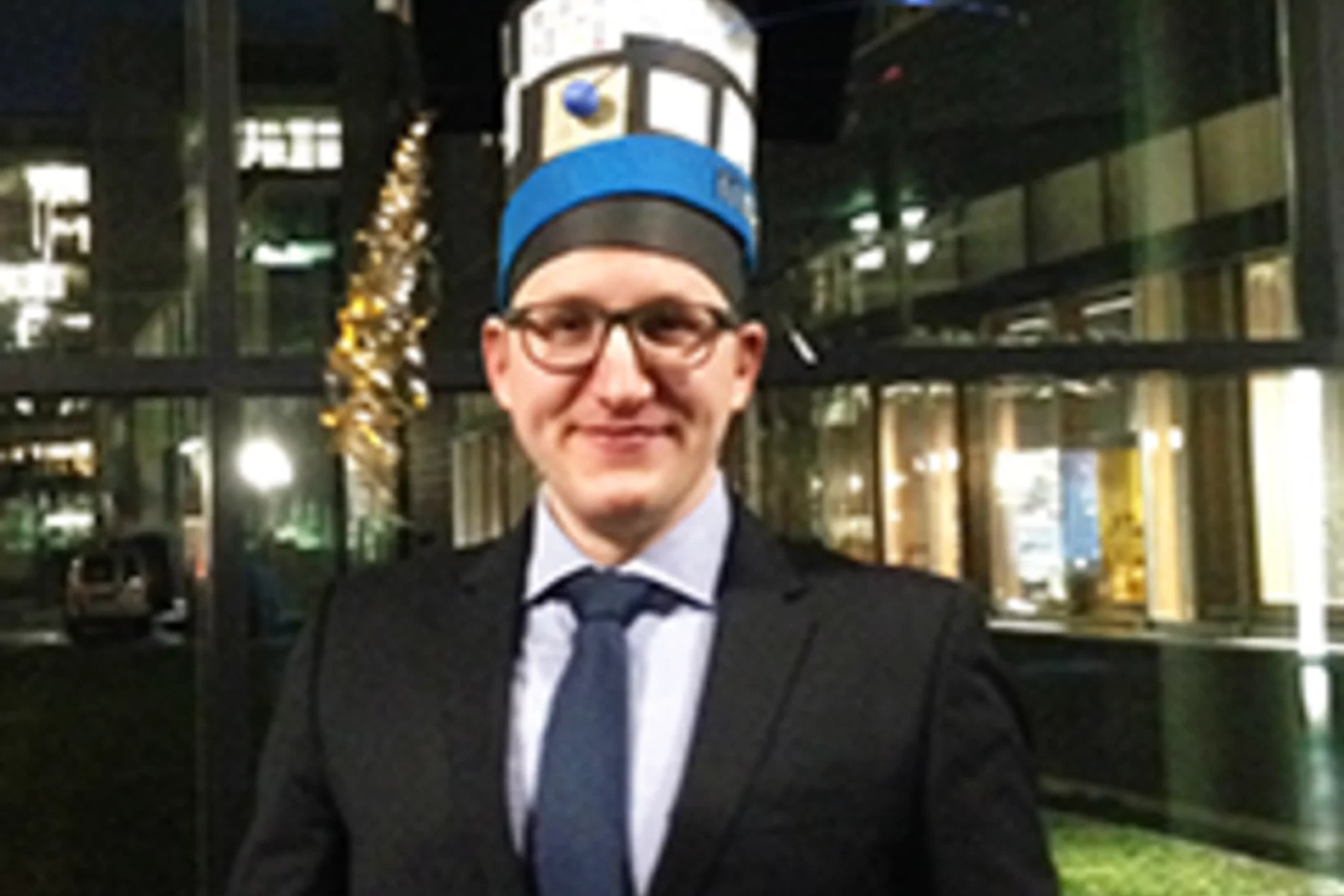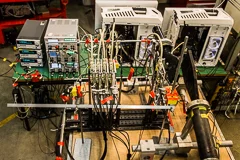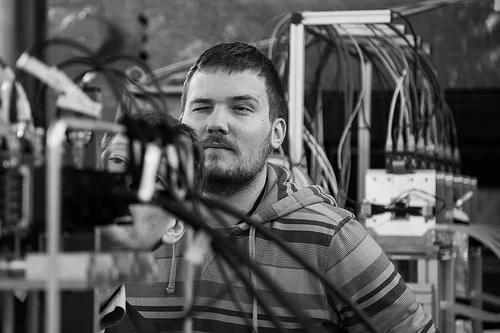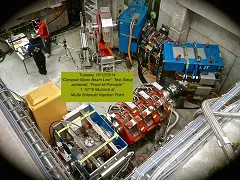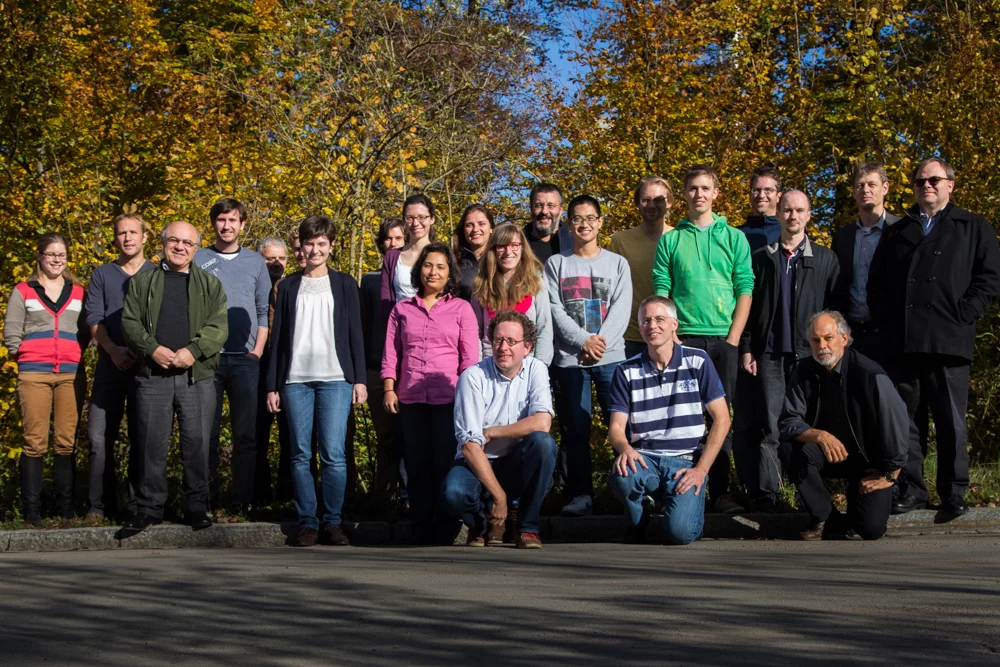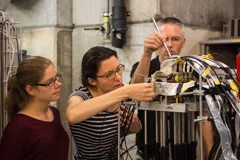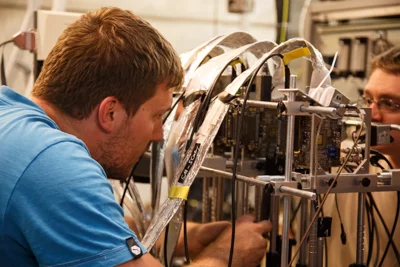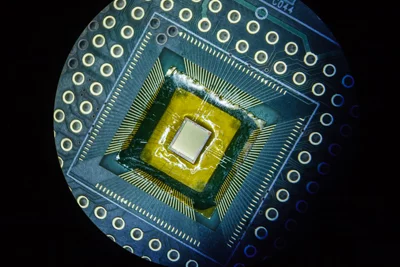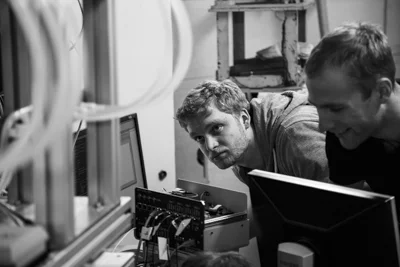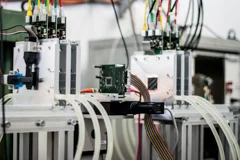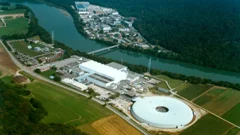Mu3e review at the PSI user meeting
In the context of the annual PSI user meeting, the Mu3e experiment underwent a detailed review by the research committee for particle physics at the ring cyclotron, discussing the preliminary version of the phase I Mu3e technical design report.
Roman Gredig successfully defends Ph.D. thesis on the fibre tracker for Mu3e
Roman Gredig was the first Ph.D. student working on the Mu3e fibre tracker. He has now successfully defended his thesis at the University of Zürich. The thesis is available here.
Mu3e contributions to PIXEL2016
The Mu3e collaboration has presented the latest state of the pixel detector development at the PIXEL2016 conference. The proceedings on the sensor and the mechanics and cooling are now available on the arXiv. You can also find the presentation slides on the talks page.
First test of pixel sensors with DMA readout and GPU based tracking
In two weeks of test beam time at PSI, for the first time we bring together MuPix7 pixel sensors with fully digital, zero suppressed readout via a high-speed LVDS link with the advanced readout and reconstruction techniques envisioned for Mu3e. The data from the sensors are processed on a FPGA and then transmitted to a graphics processing unit (GPU) for highly parallel track processing. More pictures of the setup can be found in the gallery.Patrick Eckert successfully defends Ph.D. thesis on the Mu3e tile detector
The development of the Mu3e tile detector was the main topic of Patrick Eckerts's Ph.D. thesis which he successfully defended at Heidelberg University. With this he is the first Mu3e student to obtain a doctorate, with many more to follow. In the meantime, you can read his thesis in our thesis collection.Beam test of new Mupix sensors
In a week of beam tests at DESY in Hamburg, new thin Mupix sensors were tested using 5 GeV electrons and the high precision EUDET telescope. In addition, a beam telescope consisting entierly of Mupix sensors was successfully operated. Results from both setups will give invaluable input into the design of the first centimeter-scale Mupix sensor planned for later this year.Successful test of the compact beamline for Mu3e
The Mu3e Beam group at PSI succeeded in transporting a hundred million muons per second through the new compact beam line at the PiE5 area right to the point where the Mu3e solenoid will start. The beam phase space looks better than expected from simulations.Collaboration meeting at ETH Zürich
The Mu3e collaboration met at ETH Zürich to discuss the progress and issues across all parts and subsystems of the experiments.Thin pixel sensor test beam at PSI
For the first time we are testing a 50 um thin MuPix pixel sensor for efficiency and time resolution. This is made possible by the MuPix beam telescope, also made from thin pixel sensors.Pictures
Test Beam at PSI
We are testing prototypes for all three subsystems of Mu3e, the scintillating fibres and tiles as well as the pixel detectors in a week of test beam at PSI.Pictures


